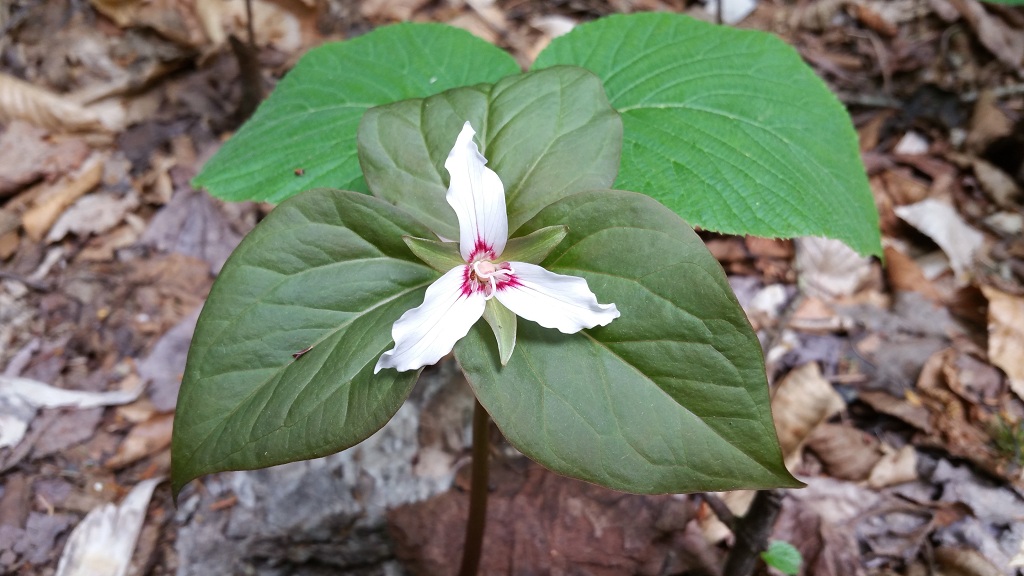
Trillium flowers offer a spectacular spring display. Commonly known as toadshade and wakerobin, they rank among the most beautiful, and the most illusive, of spring ephemeral wildflowers. They come in many different sizes, arrangements, and colors, from the smallest Snow Trilliums (Trillium nivale) to the Sweet Wakerobins (Trillium vaseyi) with flowers as wide as your hand is long! The distribution of Trillium species is all across the North Hemisphere in temperate regions. They are found in forests with rich, loamy soil remaining moist throughout the year.
One of the local native species to the Mid-Atlantic region that I call home has large red flesh-colored flowers. These red wakerobins — Trillium erectum — are colored as well as scented so as to attract the attention of carrion flies for pollination. In the eastern temperate forests of North America, it is quite common to find red, flesh-colored flowers. Everything from trillium, to pawpaw, sweetshrub, wild ginger, and even skunk cabbage. And every one of these plants are pollinated by carrion flies! Why carrion flies? This is a fascinating ecological aside. As John Muir said,
“When we try to pick out anything by itself, we find it hitched to everything else in the Universe.”
There is more to the flower and fly connection than meets the eye…
When we think of pollination, we think of the honey bee. But the honey bee is not native to North America. Instead, our native bees are ground bees. The ground bees don’t emerge until soil temperatures begin to warm mid-spring, in late April or early May around here in the Mid-Atlantic. (This time also coincides with the opening of nectar-rich nutrient-dense tulip poplar blossoms!). By the time mid-spring comes around, most of our early wildflowers are already in bloom.
Rather than relying on the slumbering bees for pollination, garnering the attention of carrion flies instead seems the better evolutionary strategy. The carrion flies seek out the colors and smells of rotting meat, and they emerge much earlier in the spring — even in the late winter — thanks to the thermogenesis abilities of a plant called skunk cabbage (Symplocarpus foetidus). Skunk cabbage can generate temperatures 15–35 °C (27–63 °F) warmer than the air surrounding the plant! Known as the mother plant by some, its deep red mottled flowers with a foul, rotten smell like flesh prove quite attractive to the carrion flies, who awaken with the warm microclimates created by the skunk cabbages piercing through snow and ice like spears. The flies awaken before the eve of the upcoming spring flower show that will unfold over the coming weeks. These interrelationships demonstrate to us vividly how the ecosystem is more than the sum of its parts.
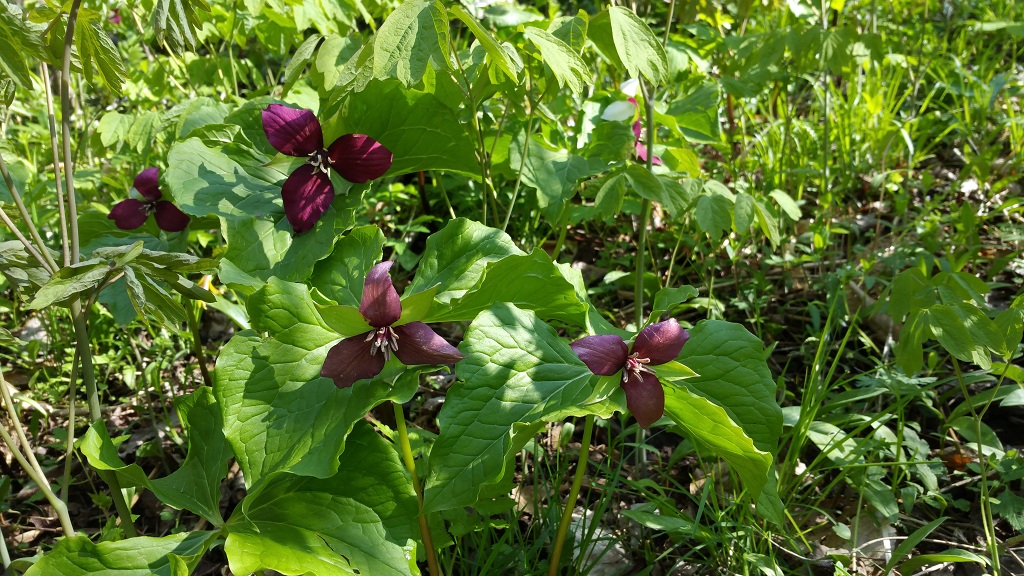
Trillium species are an occasional food and medicine to humans. The leaves may be eaten as cooked greens, but the root is bitter and inedible, and ought to be considered poisonous. Trillium are within the family Melanthiaceae, which contains some of the most toxic plants such as the death camas (Toxicoscordion/Stenanthium/Zigadenus sp.), fly poisons (Amianthum sp.), and hellebores (Veratrum sp.).
According to folk medicine, a decoction of Trillium root has the medicinal value of controlling blood flow, either to stop internal bleeding or to help in its passage. It was used as an herb to stop bleeding after birth, thus becoming known as “birthwort” or “bethroot.”
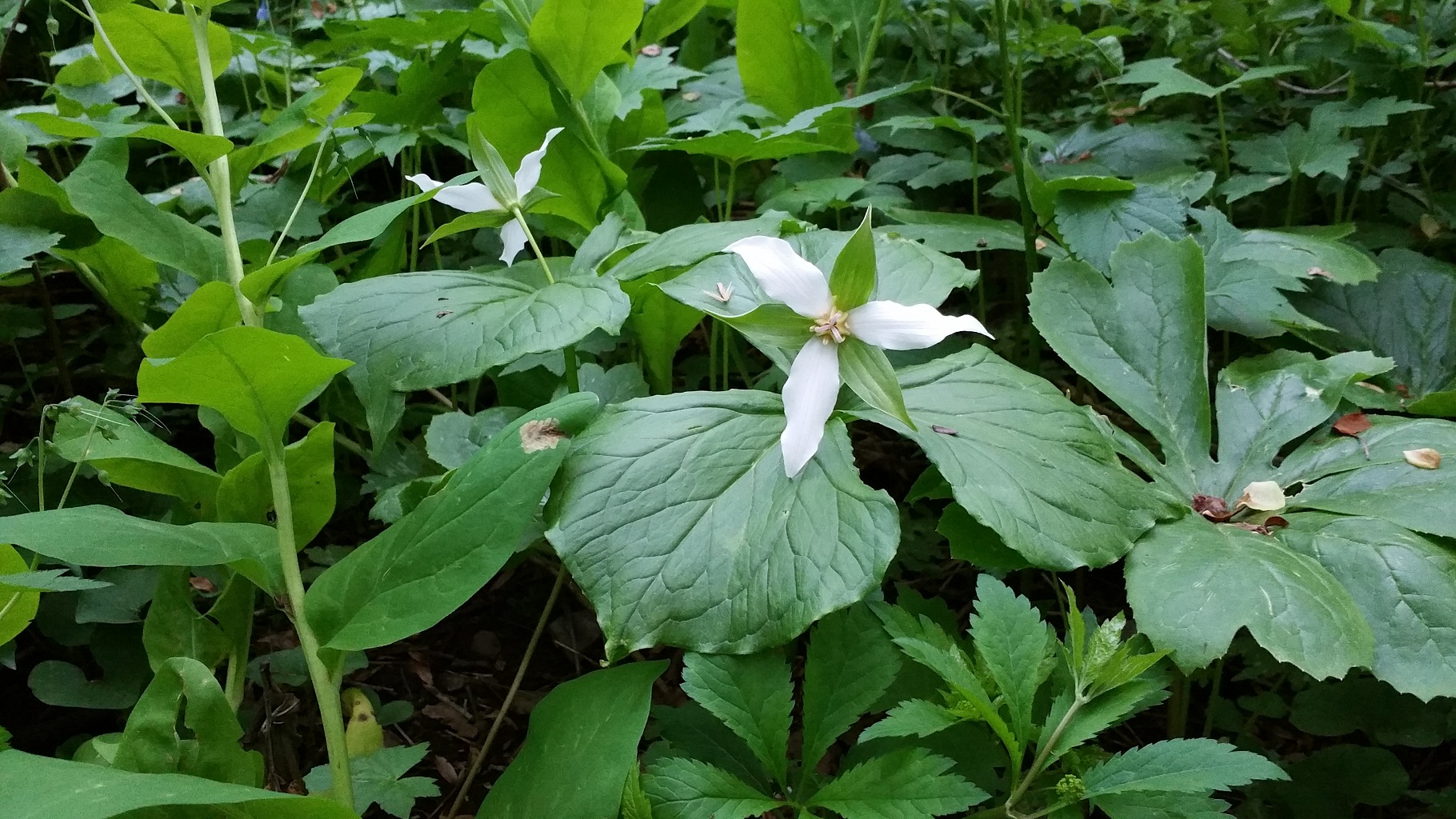
The seeds of Trillium develop inside fruit-like capsules in mid-summer. These fruits remain upon the plant for several weeks before they ripen, turn soft, and eventually fall to the ground and split open. Each seed has a large elaiosome attached. An elaiosome is made up of fatty lipids and amino acids, making the seed attractive as a food source to ants who carry them underground into their colonies. Once underground, the ants consume the elaiosome and cast the naked seed into a rubbish pile. Here the seed awaits germination in an optimal environment in terms of light, temperature, and moisture. This process is known as myrmechocory.
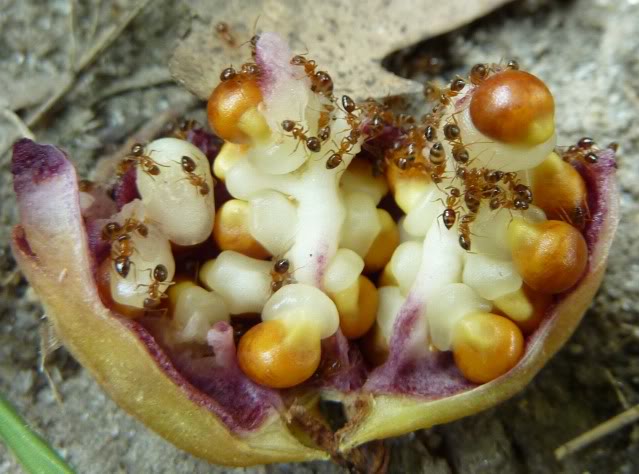
See the beauty of ecological relationships… Symbiosis is found everywhere. The skunk cabbage fosters carrion flies to pollinate Trillium flowers which form a seed that gets dispersed by ants. What a wonderful, interconnected world!

As the fruit of Trillium begins to soften after a few weeks upon the plant — generally in July and August — you can begin to harvest it. Pick whole fruits and keep them somewhere moist where they can ripen further if necessary, becoming even softer until they split open.
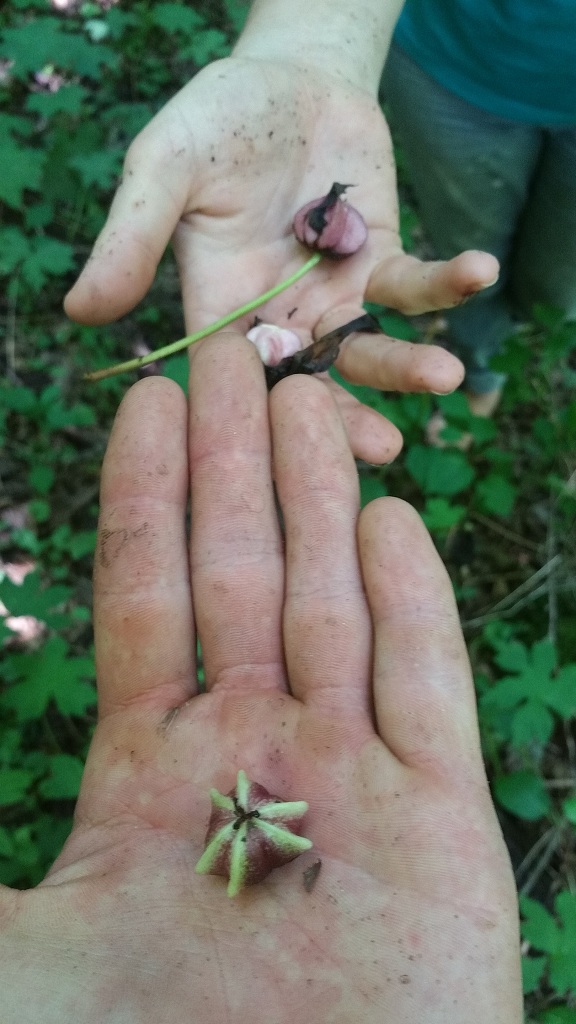
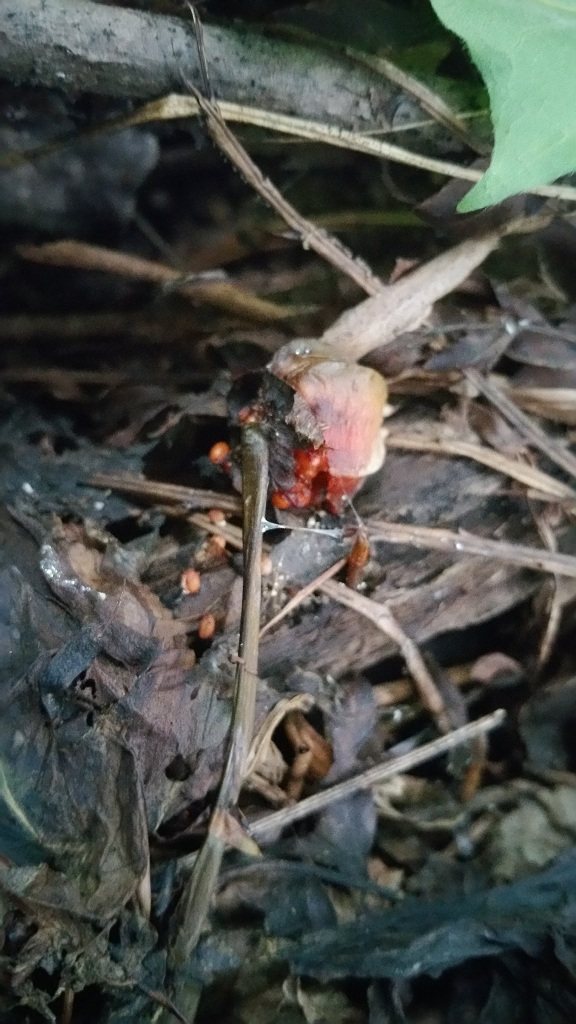
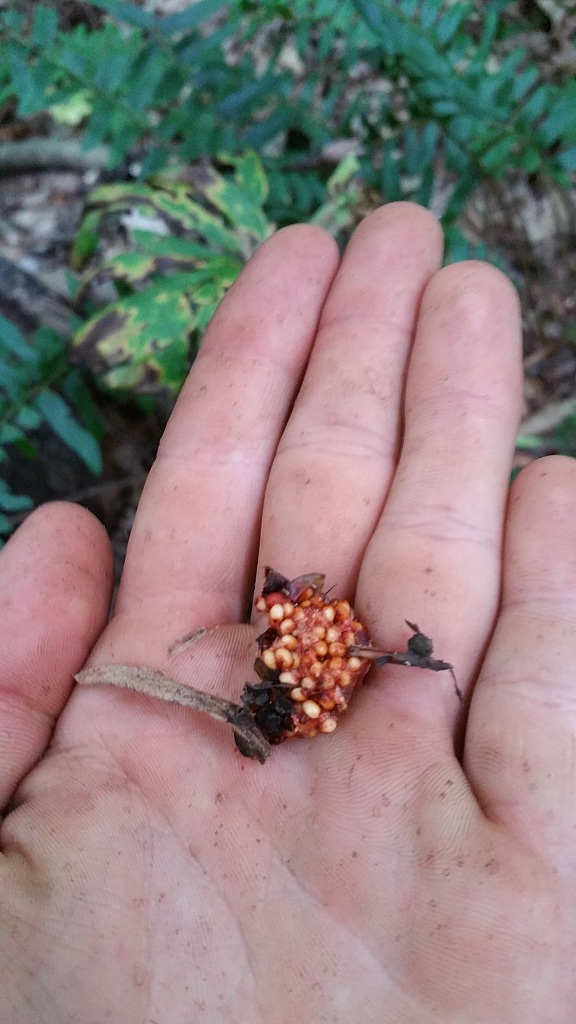
Trillium seeds, like ramps (Allium tricoccum), are double-dormant, meaning they need to wait not one, but two winters for germination. However, by harvesting the seeds a little bit early when they are slightly premature, the seeds react by germinating faster, after only a single winter. Some horticulturalists will do this in order to speed-up production times. I don’t have any experience doing this. For my purposes, reintroducing this plant species into new areas, I have allied myself with time and do not have such a sense of urgency. For the sake of genetics and plant health, I prefer my seeds to be as mature as possible and that they take their time.
To store Trillium seed, keep them in a cool, dark, and moist environment. If they dry out, they change to a darker color, shrivel up, and completely lose viability. To prevent this, I place them in a bucket filled with damp forest soil and I leave them there until I am ready to plant them into the ground.
Growing Trillium from seed is another one of those long-term plant investments. After sowing (year 1), there’s the double dormancy, and then the first monocotyledon leaf grows out of the ground and stretches out (year 2). The Trillium may continue with just one leaf another year. But by year 4, all three leaves ought to be showing. It may not be until another 3 years has passed before the Trillium flowers and can set seed of its own. They take overall approximately 7 years from seed to flower. Colonies will form, but can take a very long time to establish. However, with consistent sowing for six years straight, by the seventh year a colony ought to be self-sustaining.
My question is… do all trilliums smell like rotting meat?
Hi Penelope! Not all Trillium smell of rotting meat… Sweet Betsy (Trillium cuneatum) and Sweet White Trillium (Trillium simile) are notable exceptions.